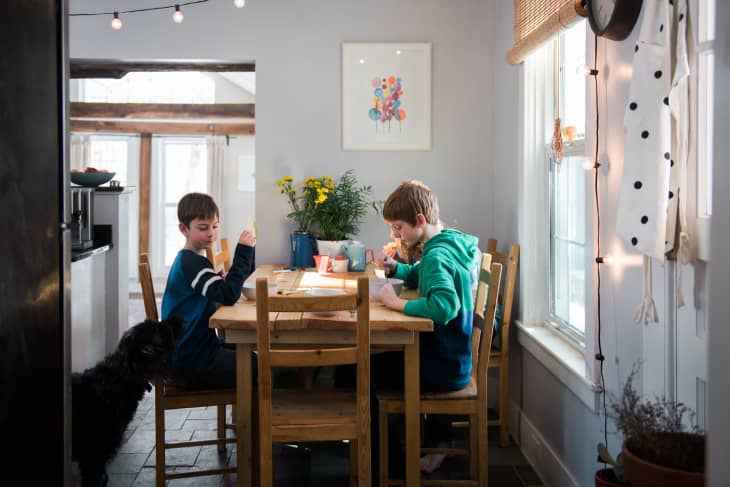Why My Family Decided to Give Up Eating Beef (for the Most Part)
A couple of years ago, I started to have beef with beef. Even though it had been a staple in my diet from the time I was a little kid, it was getting harder and harder to feel good about eating it. Not only was I concerned about hormones and antibiotics in cheap, mass-produced meat (which led to seeking out grass-fed, organic alternatives), or the poor living conditions of these animals (which led to seeking out locally farmed, grass-fed, organic alternatives), I was surprised to learn that our collective consumption of beef was hurting the environment more than our driving habits.
Whoa! Cows are hurting us more than cars? Beef was beginning to feel so not worth it.
Like my old TV friend Oprah (via Maya Angelou) always says, “When you know better, you do better.” So I tried doing better. I began to substitute chicken, turkey, and pork for beef in favorite recipes, and trying out that trendy “Meatless Monday” idea I kept hearing about. As a family, we were definitely consuming less beef, but I still kept a supply on hand for our weekly Friday nacho night. Nachos are a big deal to me, and perfectly seasoned ground beef always seemed like a necessary part of my nacho-induced, post-work-week nirvana.
Get inspired: 10 Budget-Friendly Dinners for Meatless Monday
And then my husband and I ate at Vedge, a popular vegan restaurant in Philadelphia, last year and it totally blew our minds. We’re not vegetarians or vegans, but this food rivaled anything we’ve tasted anywhere ever. When I heard the owner/chefs Rich Landau and Kate Jacoby interviewed on a podcast not long after dining at their restaurant, they said something that changed the way I’ll feel about beef (and meat in general) forever: Basically they said that meat doesn’t necessarily taste good on its own, it’s what we do to meat that tastes good. You can apply those same principles to vegetables. This idea intrigued me and also made a lot of sense — especially after what I’d tasted (I still dream about the parsnip soup and charred seitan.)
Listen now: Vegan Chefs Show How to Make Even a Carrot the Centerpiece of a Meal on NPR
So we challenged ourselves as a family to give up beef entirely. It was good for the environment, it was good for our bodies, and it probably wouldn’t be as hard as we thought, thanks to my new epiphany. Everybody was on board (including two teenage sons), and I began subbing in vegetarian meals where we’d normally eat beef.
Two things happened: First, we never missed the regular beef dishes we’d been eating forever, and second, we discovered so many new vegetarian dishes we loved like shakshuka with feta, crusty baked cauliflower and farro, and spicy tofu. Gradually, chicken, turkey and pork became less frequent in our diet, too. I went from a person who built meals and menus around meat, to a person who built meals and menus around flavors. (That’s what my TV friend Oprah calls an “Aha! Moment.”)
One note: We aren’t rigid about our no-beef lifestyle. We decided that if we’re really hankering for a burger, we get a burger. If we’re at a function where only beef is being served, there’s no need to cause our host stress. Or when our favorite local restaurant offers a dry-aged steak that is to die for, it seems wrong not to get it. (The meat is local, grass-fed, farm-raised, and a small fortune — a nice deterrent for over-consumption.) In June, for Father’s Day, I even cooked a four-pound brisket, the first beef I’d purchased from the grocery store in over nine months. It was delicious, but to be honest, we were all drawn to the side dishes — pasta salad, coleslaw, oven fries – much more than the meat.
And our Friday night nachos? We still eat them, but now I sauté diced portobello mushroom caps and sliced leeks with taco seasoning. I’m not going to lie, my beef nachos were really good, but my vegetarian nachos are amazing. (Or, as Oprah would say, AHHH-MAAAAZ-IIING!)
